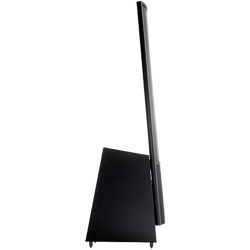Loading ...
Loading ...
Loading ...

7
JUMPER CLIPS
In some countries federal law prohibits
MartinLogan from supplying jumper clips. If none
are found installed under your speakers binding
posts, please refer to ‘Bi-Wire Connection’ for con-
nection instructions.
SINGLE WIRE CONNECTION
Please take note of the jumper clips installed
under the binding posts. These clips attach the
high-frequency and low-frequency sections of the
crossover together. Leaving these in place, con-
nect the (+) wire from your amplifier to either red
(+)binding post and the (–) wire from your ampli-
fier to either black (–) binding post (Fig. 2).
WARNING! Only after jumper
clips are removed may you con-
nect individual runs of speaker
cable from your amplifiers to the
high-frequency and low-frequency
signal input binding posts. Damage
will occur to your amplifiers if the
jumper clips are not removed.
BI-WIRE CONNECTION
This connection method replaces the jumper clips
installed under the binding posts with individual
runs of speaker wire from your amplifier. This
doubles the signal carrying conductors from the
amplifier to the speaker, thus direct-coupling each
portion of the crossover to the amplifier.
To bi-wire you must first loosen the binding posts
and remove the jumper clips. Connect one set of
wires to the upper set of binding posts which con-
nect to the high-frequency drivers. Then connect
a second set of wires to the lower binding posts
which connect to the low-frequency drivers. Next,
connect both sets of wires to the appropriate termi-
nals on your amplifier. Please take care to connect
both (+) wires to the (+) amplifier terminals and
both (–) wires to the (–) amplifier terminals. This is
known as a parallel connection (Fig. 3.
PASSIVE BI-AMPLIFICATION
For those that desire ultimate performance, these
speakers may be passively bi-amplified using the
existing internal passive crossover elements.
Fig. 2: Single-wire connection. One channel shown.
Fig. 3: Bi-wire connection. One channel shown.
Loading ...
Loading ...
Loading ...
